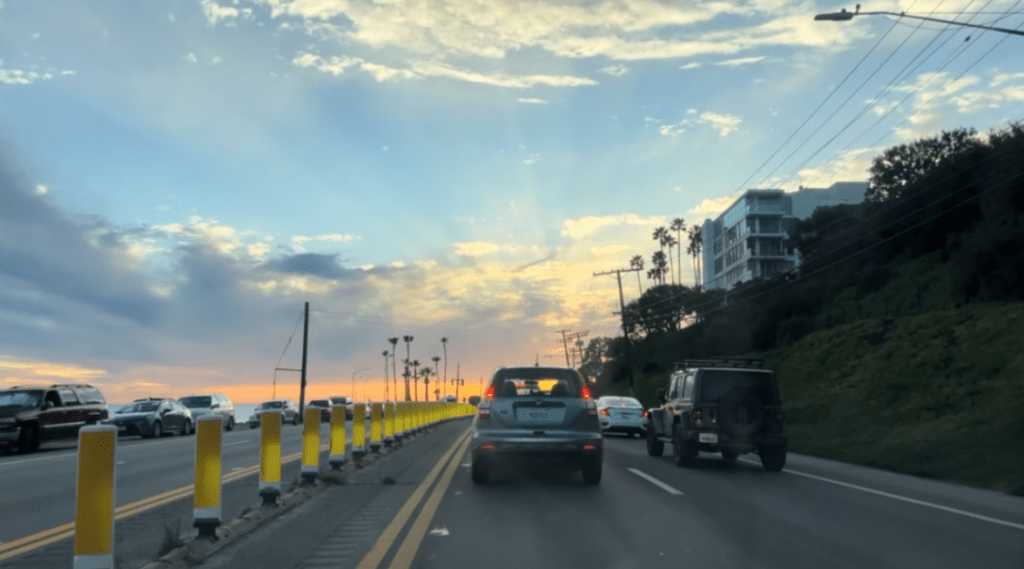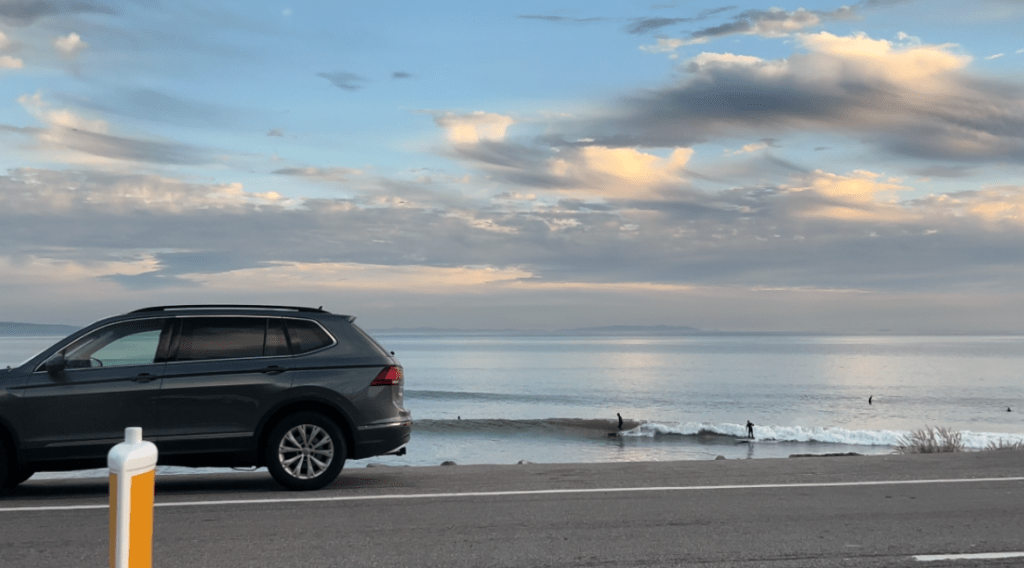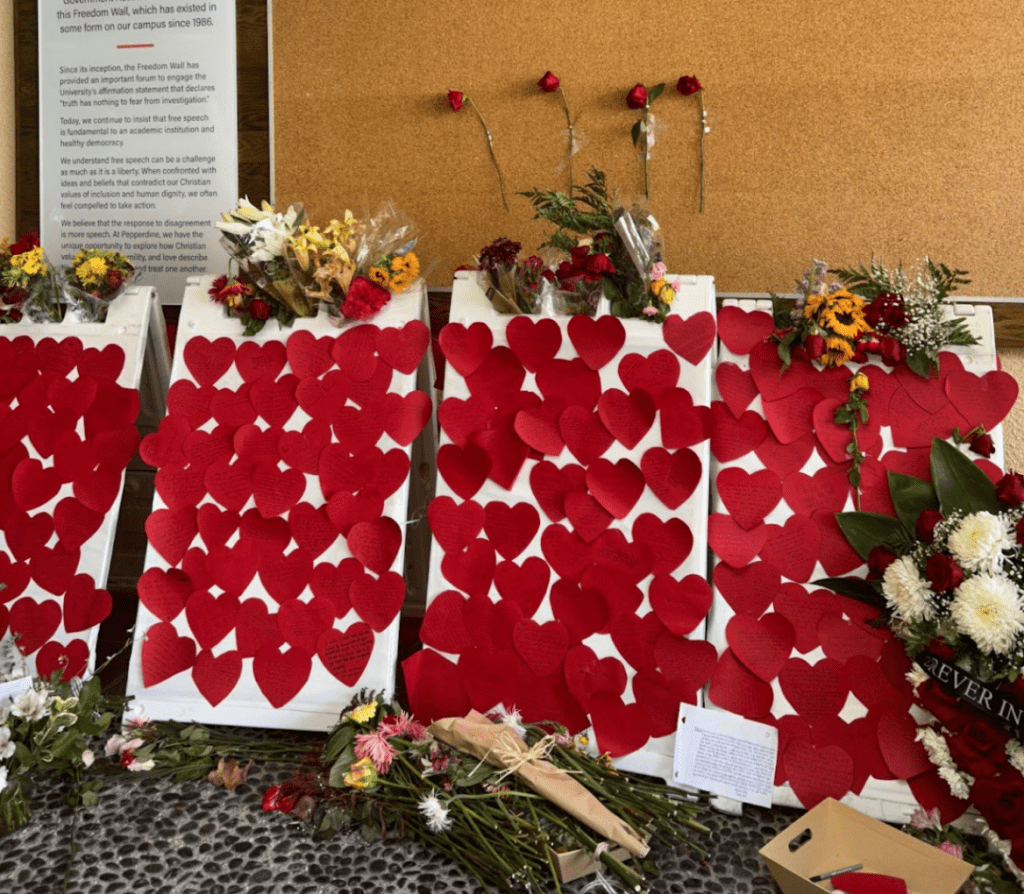
Being amid the lush green mountains, views of the dazzling blue Pacific Coast and a community where everyone knows each other, living in Malibu is like living in paradise. In a place where the sun is out most days, life can feel peaceful, locals said. But, despite the abundance of beauty in this place, the fear of driving on Pacific Coast Highway daily looms over most Malibu residents, they said.
Biology Professor Donna Nofziger said she has lived in Malibu for 28 years and on Pepperdine’s Malibu campus for 26 years. In those years, she raised her three daughters — who are all young adults now.
Though Nofziger is grateful to have raised her kids in a beautiful place like Malibu with a strong sense of community, she said she dreaded teaching her kids how to drive on the highway where 60 people have died since 2010.
“Unlike where I live[d and learned how to drive], where you had freeways and streets, PCH is the freeway, it is the street, it is everything,” Nofziger said. “You’re very aware it’s very scary.”
Navigating Driver’s Education and Safety on PCH as a Parent
As a parent, teaching one’s children how to drive is scary enough and puts their safety at risk regardless of location, Nofziger said. Having the training grounds for her children’s driver’s education be on PCH, the only way to get around in Malibu, heightened Nofziger’s fear.
As a means of teaching her kids about the responsibility of driving, Nofziger said she emphasized the danger of PCH and the importance of defensive driving.
“It’s not that I don’t trust them because I know my kids are smart,” Nofziger said. “They’re responsible, but I don’t trust the other people out there.”
While driving with her kids, Nofziger said she would point out every time someone on the road was driving recklessly or irresponsibly in hopes they would learn about what not to do. On these drives, oftentimes, her kids would roll their eyes at their mother’s caution, but Nofziger knew she needed to emphasize caution as a parent.
“I don’t want to instill in my kids a spirit of fear, but I want to instill in them a spirit of prudence and being careful and being cautious,” Nofziger said.
A common approach to driving among Malibu parents, Nofziger said, is to wait for their kids to initiate the conversation around learning how to drive. For this reason, Nofziger’s children got their licenses at different ages. The decision to start learning how to drive was dependent on her kids feeling ready to take on this responsibility.
“It’s not that I would get in the way [of them learning how to drive], but if they don’t bring it up, I’m not going to bring it up,” Nofziger said.
A rule in the Nofziger household was, if any of her children got a speeding ticket, they would get their driving privileges taken away. Her intention, she said, was not to punish her children but to let them know how seriously they should take driving. None of her kids ever received a speeding ticket.
“‘I’m trusting you with your life,’” Nofziger said, in reference to conversations with her kids. “‘You’re the most precious thing that has been brought into my life, and I’m trusting you with you.’”
Hung Le, senior vice chancellor for Alumni Affairs at Pepperdine, has raised four sons over the 31 years of living in Malibu. They, like Nofziger’s daughters, all learned how to drive on PCH, Le said.
While teaching his kids how to drive, Le said he encouraged them to avoid going south on the highway because that is where it is most congested. Le’s sons grew up being aware of the dangers of the roads and were taught about the need for defensive driving, leaving space between cars and avoiding distraction.
“If it were up to me, I could just wrap them [my sons] in bubble wrap and just keep them at home all the time,” Le said. “But, that’s not healthy.”

Driving on PCH is a Daily Routine
Living in Malibu and hearing about the overwhelming number of tragedies on PCH has made Nofziger an even more vigilant driver, she said.
“It’s not like I’m white-knuckling [the wheel] or anything like that, but I’m vigilant; I’m always looking,” Nofziger said. “You’re just aware; it becomes almost second nature because you do it so much.”
Over her years of living in Malibu, Nofziger said she has collected mental notes on specific areas along the highway and periods in which driving can be increasingly more chaotic. She has noticed that good weather days attract more visitors to the beach town and, thus, increase traffic on the road.
Areas of PCH where hiking trails start or where restaurants are located necessitate more caution. Nofziger said she tries to avoid driving on PCH during the holidays, when there is bound to be more traffic.
“There is this subconscious or conscious awareness of ‘this road is full of people who are going to put me in jeopardy,’” Nofziger said. “So, all I can do to protect myself is to be very aware of who’s in front of me [and] aware of who’s behind me, and I don’t speed.”

In the same way, Le said he tries to remain careful while driving on PCH despite it being routine and familiar to him.
“Every time we get on the road, we have to be aware that it’s not just our road, it is shared by millions of people at the same time,” Le said.
Though Nofziger said she has anxiety while driving on PCH, she knows it would be more harmful for her to stay in that fear. She said, if she constantly thought of her mortality, she would never do anything.
“I don’t want to live my life based on fear; I want to live my life period,” Nofziger said.
She often has to remind herself people drive every day, and the majority of people are safe.
“Life happens all the time,” Nofziger said. “And sometimes, bad things happen; most of the time it doesn’t.”
Safety Measures Residents Hope to See on PCH
Nofziger said it is frustrating to see reckless driving on the highway and doesn’t know how the city of Malibu can get people to drive safer.
“You think after all the highly publicized tragedies that have happened that people would just be aware and not do it,” Nofziger said. “I don’t know what the answer is because things don’t work.”
Implementing more traffic lights, traffic cameras and police enforcement are ways to increase caution and safety among drivers, residents said. Nofziger said more warnings need to be given before an accident occurs, and she believes this can take the form of more law enforcement on the highway.
She said the increasing awareness and advocacy surrounding PCH safety has made her more mindful of practicing safety while driving.
If drivers can commit to driving as carefully as possible and avoid distractions like looking at their phone or the ocean views, PCH can be safer, both Le and Nofziger said.
For some, the increase in safety measures may feel inconvenient or exasperating, but Nofziger said she feels they need to happen to ensure the death toll on PCH does not increase.
“How many people have to die?” Nofziger said. “I’m just getting upset thinking about it — our beautiful students who’ve passed away.”

Nofziger is aware that implementing more safety measures isn’t going to completely eradicate the problem of reckless driving. However, she said she is willing to do whatever it takes to minimize fatalities on PCH and believes improvement can be achieved if the community works together.
“As a scientist, I recognize you’re not going to completely be able to stop it, but you can certainly lower the statistical odds,” Nofziger said.
_________________________________
Follow the Graphic on X: @PeppGraphic
Contact Yamillah Hurtado via email: yamillah.hurtado@pepperdine.edu
